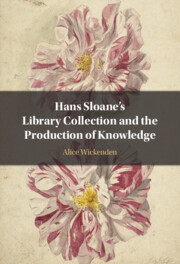Book contents
- Hans Sloane’s Library Collection and the Production of Knowledge
- Hans Sloane’s Library Collection and the Production of Knowledge
- Copyright page
- Contents
- Illustrations
- Tables
- Acknowledgements
- Introduction
- Chapter 1 Hans Sloane’s Library
- Chapter 2 Plants and/as Books
- Chapter 3 Repeating Books
- Chapter 4 Unreadable Books
- Chapter 5 Image Books
- Conclusion
- Appendices
- Bibliography
- Index
- References
Bibliography
Published online by Cambridge University Press: 20 November 2025
- Hans Sloane’s Library Collection and the Production of Knowledge
- Hans Sloane’s Library Collection and the Production of Knowledge
- Copyright page
- Contents
- Illustrations
- Tables
- Acknowledgements
- Introduction
- Chapter 1 Hans Sloane’s Library
- Chapter 2 Plants and/as Books
- Chapter 3 Repeating Books
- Chapter 4 Unreadable Books
- Chapter 5 Image Books
- Conclusion
- Appendices
- Bibliography
- Index
- References
Information
- Type
- Chapter
- Information
- Hans Sloane's Library Collection and the Production of Knowledge , pp. 217 - 246Publisher: Cambridge University PressPrint publication year: 2025
